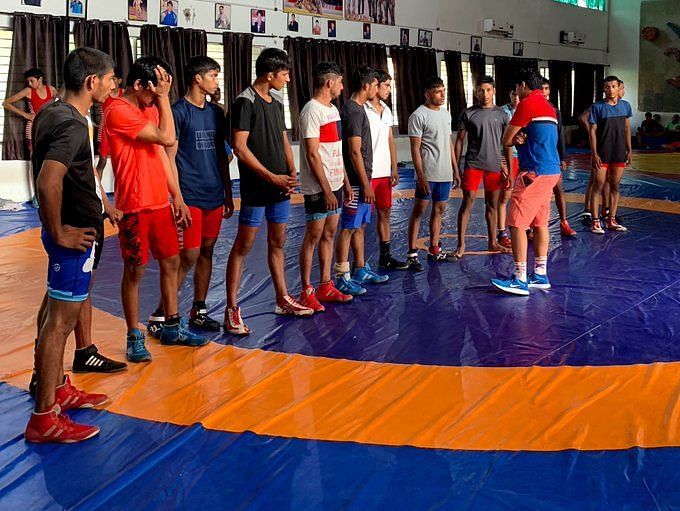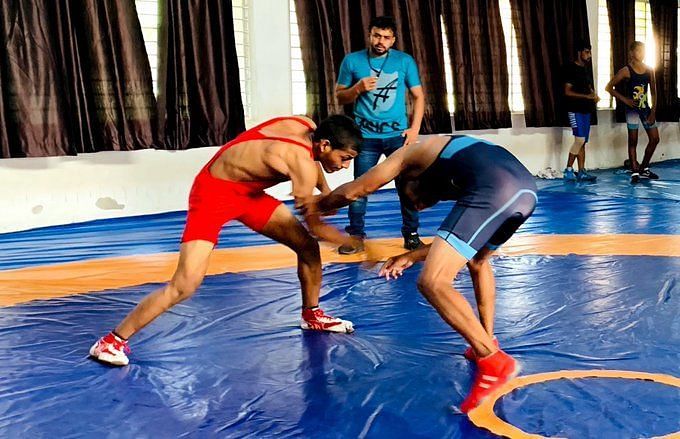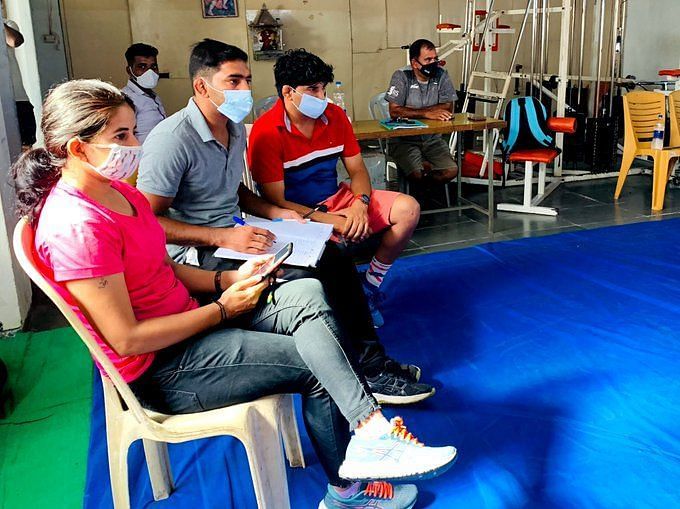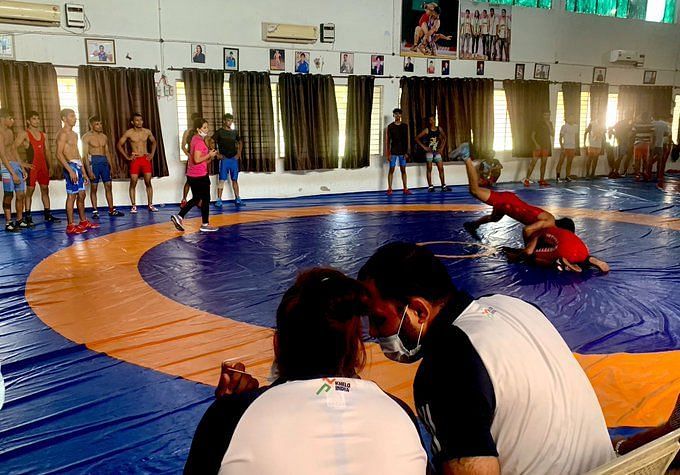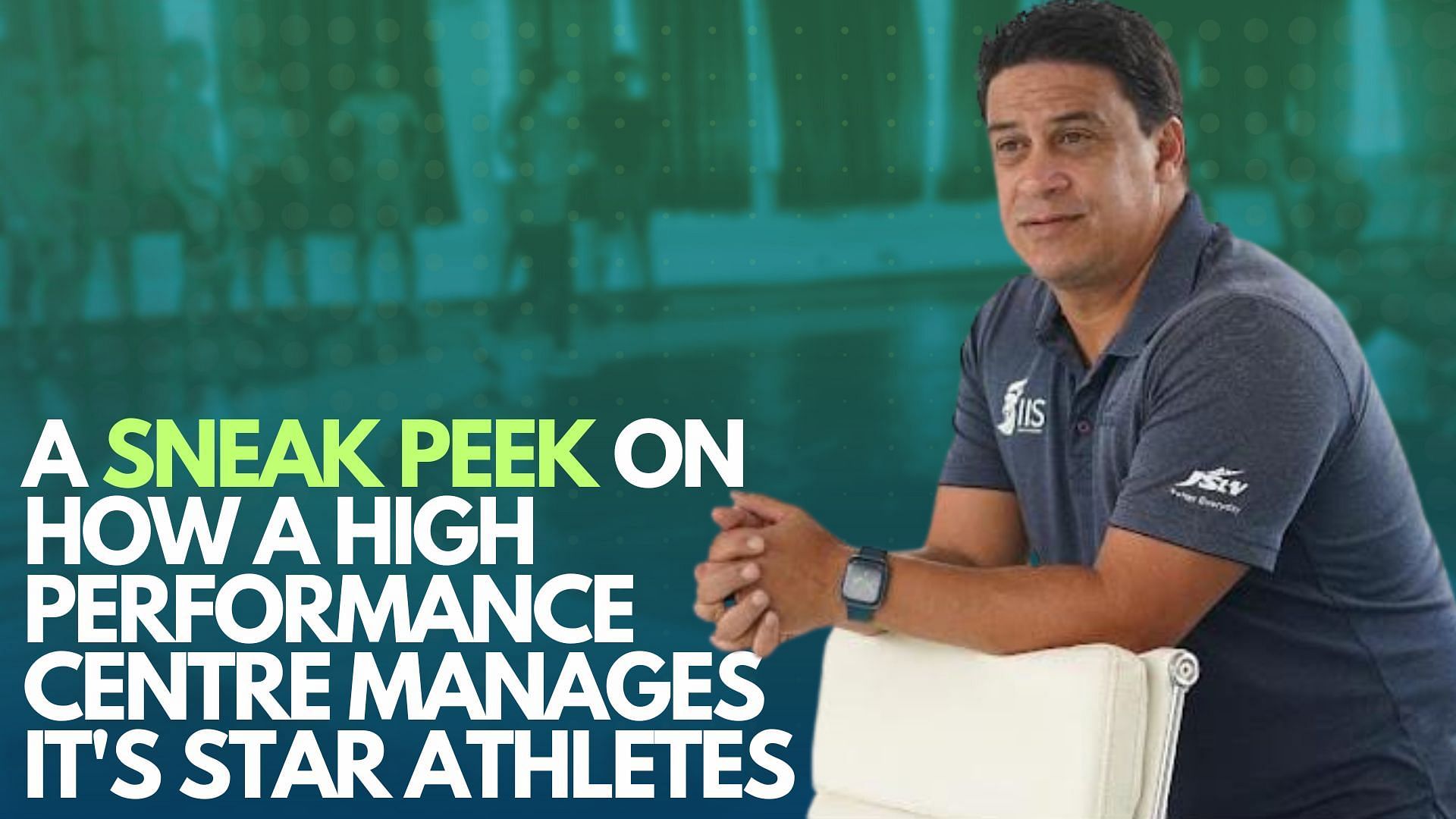
A sneak peek into how a high-performance center manages its star athletes
The Inspire Institute of Sport (IIS) was established as a cutting-edge setting to develop champions in India with an eye on Olympic achievement. The IIS, which is based in Vijayanagar, Karnataka, has some of the best coaching minds in the world to help its athletes realize their Olympic dreams. It also boasts state-of-the-art facilities and sports science.
They aim to provide a top-notch, multidisciplinary training environment that will enable the athletes to reach their full potential and deliver medal-winning performances at the Olympics.
Top professional teams and associations have held their conditioning camps and training sessions at IIS. The top-notch training facilities of the Institute have been extensively utilized in 2019 by IPL team Delhi Capitals, Kabaddi teams Haryana Steelers and Puneri Paltan, and more.
The Australian Strength & Conditioning Association (ASCA) hosted its first training camp in April 2018 and has since returned multiple times. The Under-16 South Zone squad from the National Cricket Academy arrived in June and September of last year.
Other organizations that hold camps here include the Boxing Federation of India, the Karnataka Amateur Boxing Association, the Army Sports Institute in Pune, and SAI Gujarat.
They have star athletes like Neeraj Chopra, Bajrang Punia and Nisha Dahiya. All of them, whose achievements require no briefing.
Sportskeeda had an exciting opportunity to have a conversation with Rushdee Warley, CEO of IIS. He talked about what sets IIS apart from other sporting facilities in India and how the state-of-the-art facility uses different models to bring success to the athletes.
Excerpts from Inspire Institute of Sport CEO Rushdee Warley's interaction with Sportskeeda.
Question: You have expertise working with a variety of sporting organizations; what sets IIS apart from others?
Rushdee Warley: I think what sets apart IIS is the sheer passion and the kind of personnel that we have at the facility to ensure that our athletes are able to reach their full potential.
I have had stints with Swimming South Africa followed by New Zealand, and the one thing that has been common is a holistic environment for the athletes to find their calling and flourish. At IIS, starting from coaching, sports science, infrastructure, operations, and administration, we pay special attention to every detail.
We have been able to bring in world-class coaches from around the world to aid our already strong arsenal of Indian coaches, and together they have managed to create a major impact across our flagship programs like Athletics, Wrestling, Boxing, and Judo.
We have also invested our energy in developing our sports science center, which is, in my opinion, one of the best in the country, and we are constantly trying to make it even better by bringing in the latest advancements in sports science technology.
Here, we are focused on building strong Indian case studies of Indian athletes that the next generation can look up to. Starting with the diet and scientifically analyzing their training methodology, we have a full team working in conjunction with the coach to bring out the best in each athlete.
Lastly, international exposure is utterly necessary for all athletes to grow. We will ensure that there is a healthy mix of domestic as well as international competition to keep a regular check on their development.
Q. Can you talk about the significant changes that have occurred in IIS, particularly in the last five years? What is the x-factor you introduced?
Rushdee Warley: We brought the first bunch of athletes into the system in April 2017, and now, six years later, IIS is a known name, and now we have applications from all around the country wanting to join.
At the moment, we have around 245-260 people across all disciplines on campus. We have also seen a growing interest from women athletes in being a part of IIS. We are already constructing an additional women’s hostel on campus so that we can accommodate another 120 girls, as our current hostels are fully occupied.
Further, from an infrastructure point of view, we have heavily invested in our sports science center, which has become one of the key USPs amongst athletes looking to improve their performance. We are also working with IIT Madras to develop boxing analytics software that can give us more real-time data on understanding what it takes to make a world-class pugilist.
When it comes to our programs, our Judo program has been going very well. We are also now adding swimming to our repertoire; our existing 25m pool together with the construction of an Olympic-size pool, which is currently in process, and we are undertaking a global search for personnel to lead it.
What we can surely call our flagship is the athletics program and the results are in front of us. All our athletes are doing well, breaking records, and bringing accolades to the nation.
Q. How is IIS employing the PPP model to influence cultural change among Indian states?
Rushdee Warley: The PPP model is one that allows us to sustain the Institute for several short terms, with a vision for the long term. For India, I believe that the PPP model is the need of the hour. More private players supporting the state government will only increase the opportunities for aspiring athletes.
When talking about key partnerships, we already have one with the Odisha Government to run our swimming program in the state, and we have also partnered with the Manipur Judo Association to develop judokas in the region and find new talent.
Further, we have two more satellite centers dedicated to our key sports focus areas: Hisar in Haryana for wrestling and Himachal Pradesh for boxing.
Q. Can you talk about the marketing strategy IIS uses? Is infrastructure its biggest USP?
Rushdee Warley: From a pure-play marketing perspective, we stick to what we do best. We have been working on partnerships with state governments and federations to make our programs accessible to a larger set of audiences.
Further, most of our investment goes into improving our infrastructure, which gives us an edge in the business.
Q. Can you comment on IIS's use of a scientific approach to athlete performance?
Rushdee Warley: We constantly strive to work towards an integrated approach to support athlete delivery. We use a coach-led model supported by applied sports science. What this means is that the coach must effectively outline his vision for the program to the sports team (assistant coaches, sports science staff).
Within that vision, the coach must articulate the roles and responsibilities of all role players. The sports science team needs to develop programs aligned with the vision and outcomes of the coach in taking care of the dietary, mental, and overall needs of the athlete.
The team needs to meet regularly to assess the progress of the program and, where necessary, make adjustments, course correct, and ensure that the objectives and goals of the program and, by extension, the individual athletes, are being met and remain on track.
Applications of sports science, including research in sports science, must be applied and have a direct outcome on the performance of the athletes.
If it is purely theoretical and the coach cannot see how sports science interventions impact and translate into performance improvement, the likely outcome is that the intervention will be discarded.
I would like the modern-day coach’s role to be that of a conductor of an orchestra. In order to create a symphony, he needs all sections of his orchestra to play in harmony and know when and how to deliver their specific sections within the wider symphony.
We also want to build Indian models for the coming generation of athletes to refer to; hence, we are already working on a Boxing Analytics application with IIT Madras.
Q. IIS has built world-class infrastructure for Olympic sports; do you plan on also building modern facilities for mainstream sports like Cricket and Football?
Rushdee Warley: To be honest, while team sports look like a lucrative prospect, our concentration is on building upon and expanding our existing capabilities further. We have only now started seeing results in individual disciplines, but we have to ensure that consistency is maintained.
As far as teams are concerned, we already have the U14 and U16 teams of Bengaluru FC training at IIS, so football is already underway.
Q. What should India be doing, in your opinion, to improve its athletic infrastructure?
Rushdee Warley: The first and foremost thing that we need to work towards is creating a mindset change so that there are more opportunities to access sports at an early age.
Physical literacy is as important as mental development for the holistic development of children. Promoting fun physical literacy and fun-based sports within schools and clubs is important to develop a lifelong love for sports and physical activity. We should encourage our young people to play multiple sports and avoid early specialization.
This will promote more holistic development not only as an athlete but more importantly as a person; learning new skills and interacting with a range of different people brings with its fantastic life lessons.
In a country like India, early access to varied sporting disciplines is of the utmost importance.
Further, more private players are needed in the sector, particularly in Olympic sports, to help athletes with the last-mile push, and this is where the role of the PPP model becomes even more significant.

